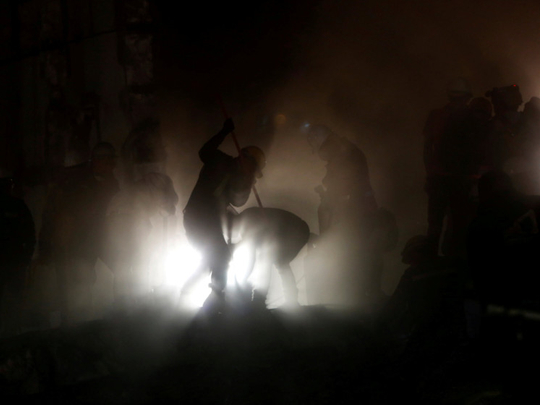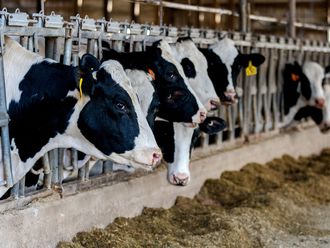
Two strong earthquakes, 12 days apart, have shaken Mexico this month, crumpling buildings, sending panicked people into the streets, and together killing hundreds of people who were unable to escape the destruction.
Just before midnight on September 7, a magnitude-8.1 earthquake - the most powerful to hit Mexico in a century - rattled the country, doing the brunt of its damage to the southern part, which was closest to the quake’s epicenter off the Pacific Coast.
Then, on Tuesday, as officials continued their cleanup and recovery efforts, an earthquake with a preliminary magnitude of 7.1 struck about 100 miles southeast of Mexico City, causing severe and sustained shaking in the capital. It occurred on the anniversary of a quake in 1985 that killed as many as 10,000 people in Mexico.
Although it might seem unusual for two strong earthquakes to hit relatively near each other in such a short time, scientists say strong earthquakes can sometimes alter stresses nearby, leading to subsequent quakes. But they are not sure yet if that is what happened with these two. Here’s a look at some of what they know about earthquakes, how often they strike, and where the most powerful ones can occur.
Why does Mexico keep getting hit with powerful earthquakes?
Mexico’s location makes the country prone to strong earthquakes because it is in a so-called subduction zone.
Subduction zones are the parts of the Earth where one slab of the crust is slowly sliding under another. In Mexico’s case, an oceanic plate - the Cocos - is gradually sinking beneath a continental plate - the North American.
Over time, stress builds because of friction between the slabs, and at some point, the strain becomes so great that all the pent-up energy is released in the form of an earthquake.
The subduction zone responsible for the two recent quakes runs along the western coast of Central America, from central Mexico to Panama, said Gavin Hayes, a research geophysicist with the US Geological Survey. Other subduction zones are found across the globe - and experts say they are responsible for the world’s most powerful earthquakes.
In fact, earthquakes with a magnitude of 9.0 or higher can occur only in subduction zones, Hayes said. Relatively recent examples of such “megathrust” quakes include a magnitude-9.1 quake off Japan in 2011, a magnitude-9.1 quake in Indonesia in 2004, a magnitude-9.2 quake that struck Alaska on Good Friday in 1964 and a magnitude-9.5 quake that struck Chile in 1960 - the strongest quake ever recorded.
Why weren’t the Mexico quakes even stronger?
Both earthquakes that struck Mexico this month occurred within the sinking Cocos Plate, rather than between the Cocos Plate and the North American.
Had the recent quakes occurred between the plates, it would have produced a megathrust. Quakes at plate boundaries usually involve larger faults and thus release more energy, generating shaking over larger areas. But they also usually occur farther from the surface, Hayes said.
Earthquakes that happen inside a plate tend to be weaker, but closer to the surface. Consequently they can cause major damage to whatever is sitting above them.
The September 7 earthquake was stronger than the one that struck less than two weeks later, but experts said it could have less of an impact because the epicenter was farther from densely populated areas.
The more recent quake was much closer to Mexico City, which Hayes said is built on a sedimentary basin. That kind of geology amplifies an earthquake’s shaking more so than, say, an area with more bedrock.
How often strong quakes happen?
Typically, about one quake of magnitude 8 or higher occurs somewhere in the world every year; there are about a dozen quakes of magnitude 7 or higher annually, Hayes said.
So far, 2017 has actually been a “quiet year” for earthquakes, Hayes said. According to USGS data, about 4,200 earthquakes of magnitude 4.5 or higher have occurred around the world so far this year. Over the same period in 2016 and 2015, about 5,100 quakes of the same strength occurred. In 2014 there were closer to 6,000.
Where might a powerful quake strike in the United States?
There are two subduction zones in the United States. One, which includes Alaska, generated the 9.2 quake in 1964, and therefore, Hayes said, another quake of that strength probably won’t happen for hundreds of years.
The other, the Cascadia subduction zone, runs along the Pacific Coast on the western borders of Oregon and Washington. There, the Juan de Fuca Plate is edging east and slipping slowly beneath the North American Plate.
This Cascadia subduction zone last generated a magnitude-9.0 earthquake in the Pacific Northwest in 1700, and based on what we know about the frequency of such quakes, Hayes said that another one of similar strength could occur any day now.
A quake that big, and the tsunami it would generate, would be “devastating” to both Oregon and Washington, especially their coasts, Hayes said.
“Our operating assumption is that everything west of Interstate 5 will be toast,” an official with the Federal Emergency Management Agency said.
Oklahoma has had issues in recent years with what Hayes called “human-induced” earthquakes, which are the result of wastewater being pumped into the ground. They have been recorded with magnitudes as high as about 5.8, but it’s not clear how much stronger they can get.
The San Andreas fault, which creates something of a spine that runs north to south along most of western California, is capable of producing an earthquake with a magnitude as high as 8.2, Hayes said.
Such a quake would be relatively shallow, he added, and experts say it could be catastrophic for the densely populated state.












